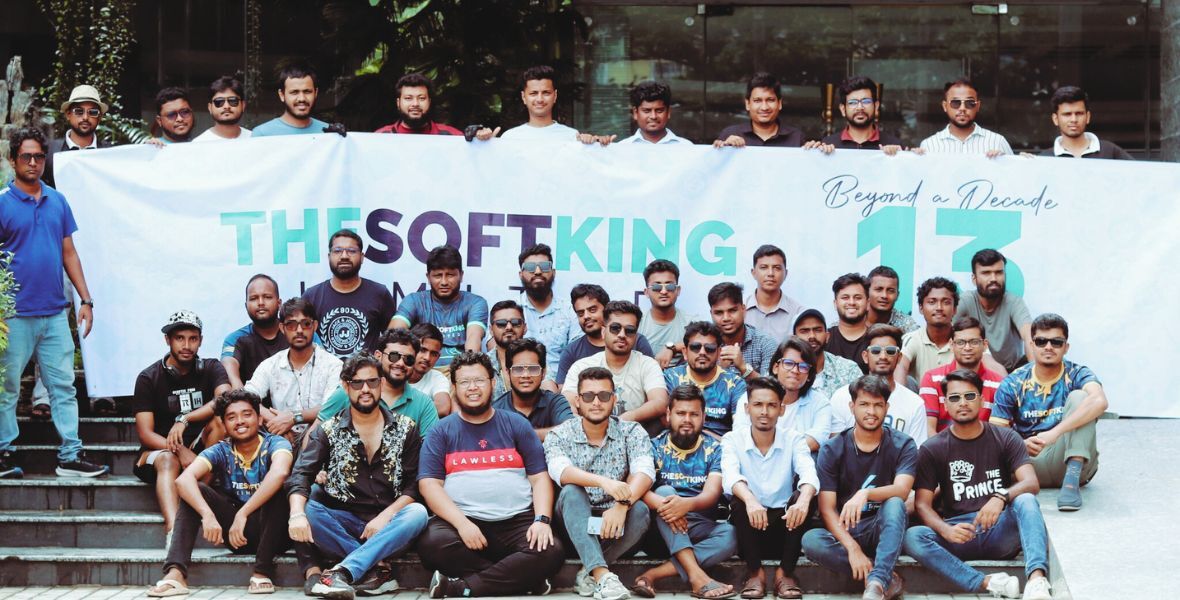AlmaLinux vs Rocky Linux 2025: Best CentOS Alternatives for Enterprise Linux Migration

If you’re scrambling to find a solid CentOS replacement, you’re not alone. The end of CentOS 7 in June 2024 pushed many of us to explore new options.
AlmaLinux and Rocky Linux stand out as top contenders. Both promise enterprise-grade stability and compatibility with Red Hat Enterprise Linux (RHEL). But which one fits your needs? Let’s dive into this comparison to help you decide.
I’ll break down their origins, features, and performance in a conversational way. By the end, you’ll have a clear picture of AlmaLinux vs Rocky Linux for your enterprise Linux migration. Ready? Let’s get started!
Why CentOS Alternatives Matter in 2025
Red Hat’s decision to discontinue CentOS Linux shook the enterprise world. CentOS Stream, its replacement, focuses on upstream development, not stable production environments. This shift left many seeking reliable, RHEL-compatible Linux distributions. AlmaLinux and Rocky Linux emerged to fill this gap, offering free, community-driven solutions.The Fall of CentOS and Rise of New Options
CentOS was a go-to for servers due to its stability and RHEL compatibility. Its end-of-life announcement in 2020 forced businesses to act fast. AlmaLinux and Rocky Linux stepped up, both built on RHEL’s source code. They aim to deliver the same enterprise-ready experience you loved in CentOS.Community-Driven Linux Distributions Take Center Stage
AlmaLinux and Rocky Linux thrive on community support. Unlike commercial options like RHEL, these are free and open-source. They cater to businesses needing dependable server OS alternatives without hefty licensing fees. Their shared RHEL roots ensure seamless transitions for CentOS users.Enterprise Linux Migration Challenges
Migrating from CentOS isn’t just about picking a new OS. You need compatibility, support, and minimal downtime. Both AlmaLinux and Rocky Linux offer tools to simplify this process. Their migration scripts make switching from CentOS to either distro straightforward, but differences exist.What Is AlmaLinux?
Let’s talk about AlmaLinux first. Born in 2021, it’s a community-driven Linux distribution backed by CloudLinux, a company known for server security. AlmaLinux aims to be a direct CentOS replacement, focusing on stability and enterprise use. It’s governed by the AlmaLinux OS Foundation, ensuring long-term support.AlmaLinux’s Origins and Backing
CloudLinux launched AlmaLinux to address the CentOS void. With a $1 million annual sponsorship, it’s well-funded. The AlmaLinux OS Foundation, a non-profit, drives its development. This blend of commercial and community support makes AlmaLinux a stable choice for enterprises.AlmaLinux Package Manager and Updates
AlmaLinux uses RPM and DNF package managers, just like RHEL. Updates follow RHEL’s release cycle closely, ensuring timely security patches. AlmaLinux 8 is supported until 2029, and AlmaLinux 9 until 2032. This long lifecycle suits businesses needing predictable maintenance.Security Features in AlmaLinux
Security is a priority for AlmaLinux. It includes Secure Boot and SELinux for robust protection. The distro also supports the Center for Internet Security (CIS) benchmarks. These features help you harden systems against threats, making AlmaLinux ideal for secure server environments.AlmaLinux Stability and Performance
AlmaLinux shines in stability. Its enterprise focus ensures consistent performance across web servers web servers, databases, and cloud deployments. Users on platforms like Reddit praise its seamless CentOS migration and reliable operation, especially for VPS hosting with AlmaLinux.What Is Rocky Linux?
Now, let’s shift to Rocky Linux. Created by CentOS co-founder Gregory Kurtzer, it’s a tribute to early CentOS developer Rocky McGaugh. Launched in 2021, Rocky Linux aims for 1:1 RHEL compatibility. The Rocky Enterprise Software Foundation governs it, emphasizing community-driven development.Rocky Linux’s Community Roots
Gregory Kurtzer started Rocky Linux to preserve CentOS’s original vision. The Rocky Enterprise Software Foundation, a Public Benefit Corporation, ensures transparency. With 12 sponsors and partners, Rocky Linux relies heavily on community contributions, appealing to those who value open-source governance.Rocky Linux Installation and Package Management
Installing Rocky Linux feels familiar if you’ve used CentOS. It uses RPM and DNF for package management, matching RHEL’s setup. The migrate2rocky script simplifies transitions from CentOS. Rocky Linux 8 and 9 mirror RHEL’s support until 2029 and 2032, respectively.Rocky Linux Security and Bug Fixes
Rocky Linux prioritizes security with SELinux and Network Time Security. Its bug tracker, hosted on GitHub, encourages community-reported fixes. Reddit users note Rocky Linux’s quick response to bugs, making it a dependable choice for enterprise server migration.Rocky Linux Server Performance
Rocky Linux delivers strong performance for servers. It handles web hosting, high-performance computing, and virtualized environments well. Users on Reddit highlight its stability in production settings, especially for VPS hosting with Rocky Linux, matching AlmaLinux’s capabilities.Comparing AlmaLinux vs Rocky Linux for Enterprise Use
Both distros are RHEL-compatible, but their approaches differ. AlmaLinux leans on commercial backing, while Rocky Linux emphasizes community governance. Let’s explore how they stack up for enterprise Linux migration, focusing on key factors like support, compatibility, and performance.Compatibility with RHEL and CentOS
AlmaLinux focuses on Application Binary Interface (ABI) compatibility with RHEL, allowing flexibility in updates. Rocky Linux maintains strict 1:1 binary compatibility, mirroring RHEL exactly. Both ensure your CentOS applications run smoothly, but Rocky’s approach is closer to CentOS’s original model.Migration Tools for Seamless Transitions
Switching from CentOS? AlmaLinux’s ELevate tool supports migrations to AlmaLinux 8 or 9, even from CentOS 7. Rocky Linux’s migrate2rocky script handles transitions within major versions. Reddit users report both tools work well, with AlmaLinux’s ELevate offering broader repository support.Support Models: Community vs Commercial
AlmaLinux benefits from CloudLinux’s commercial support, offering SLAs for enterprises. Rocky Linux relies on community forums and documentation. For businesses needing paid Linux support, AlmaLinux’s TuxCare partnership provides an edge. Rocky Linux suits those comfortable with community-driven Linux distributions.Performance for Enterprise Servers
Both distros perform similarly in enterprise settings. AlmaLinux’s broader platform support, including Raspberry Pi and WSL, gives it versatility. Rocky Linux excels in high-performance computing, as noted in Reddit discussions. Either works well for Linux for servers, depending on your setup.Security Features and Updates
AlmaLinux’s CIS benchmarks and FIPS validation cater to security-conscious enterprises. Rocky Linux uses Network Time Security for real-time threat detection. Both deliver timely security patches, but AlmaLinux’s commercial backing often means faster updates, a point echoed on Reddit.Enterprise Linux Migration: Making the Switch

Migrating to a new OS can feel overwhelming, but both AlmaLinux and Rocky Linux simplify the process. Their migration tools and RHEL compatibility minimize downtime. Let’s look at how to approach enterprise server migration with these CentOS alternatives.
Planning Your Migration from CentOS
Start with a full system backup. Test migrations in a sandbox environment, as Reddit users recommend. AlmaLinux’s ELevate supports third-party repositories like EPEL, making it versatile. Rocky Linux’s migrate2rocky requires updating to CentOS 8.5 first for smoother transitions.AlmaLinux VPS and Rocky Linux VPS Hosting
Both distros are popular for VPS hosting. AlmaLinux’s integration with cPanel and Plesk appeals to web hosting providers. Rocky Linux’s community-driven approach suits custom setups. Providers like Hostinger support both, ensuring flexibility for your VPS hosting needs.Long-Term Viability and Lifecycle Support
AlmaLinux’s commercial backing ensures a predictable roadmap. Rocky Linux’s community model depends on user contributions but has strong momentum. Both offer 10-year support cycles, with AlmaLinux 8 and Rocky Linux 8 supported until 2029, and version 9 until 2032.Choosing Based on Your Needs
If you prioritize commercial support, AlmaLinux is the better pick. For a purely open-source experience, Rocky Linux shines. Reddit users suggest testing both in virtual machines to see which aligns with your server OS alternatives.Addressing Common Concerns
You might wonder about specific issues like fixing dates or handling custom ISOs. Both distros handle these well, but there are nuances. Let’s tackle some practical concerns for AlmaLinux and Rocky Linux users.Fixing Date Issues in AlmaLinux and Rocky Linux
Time synchronization is critical for servers. Both distros use chronyd for time management. To fix date issues in AlmaLinux or Rocky Linux, run sudo chronyc makestep. Reddit users confirm this resolves most time-related errors efficiently.






